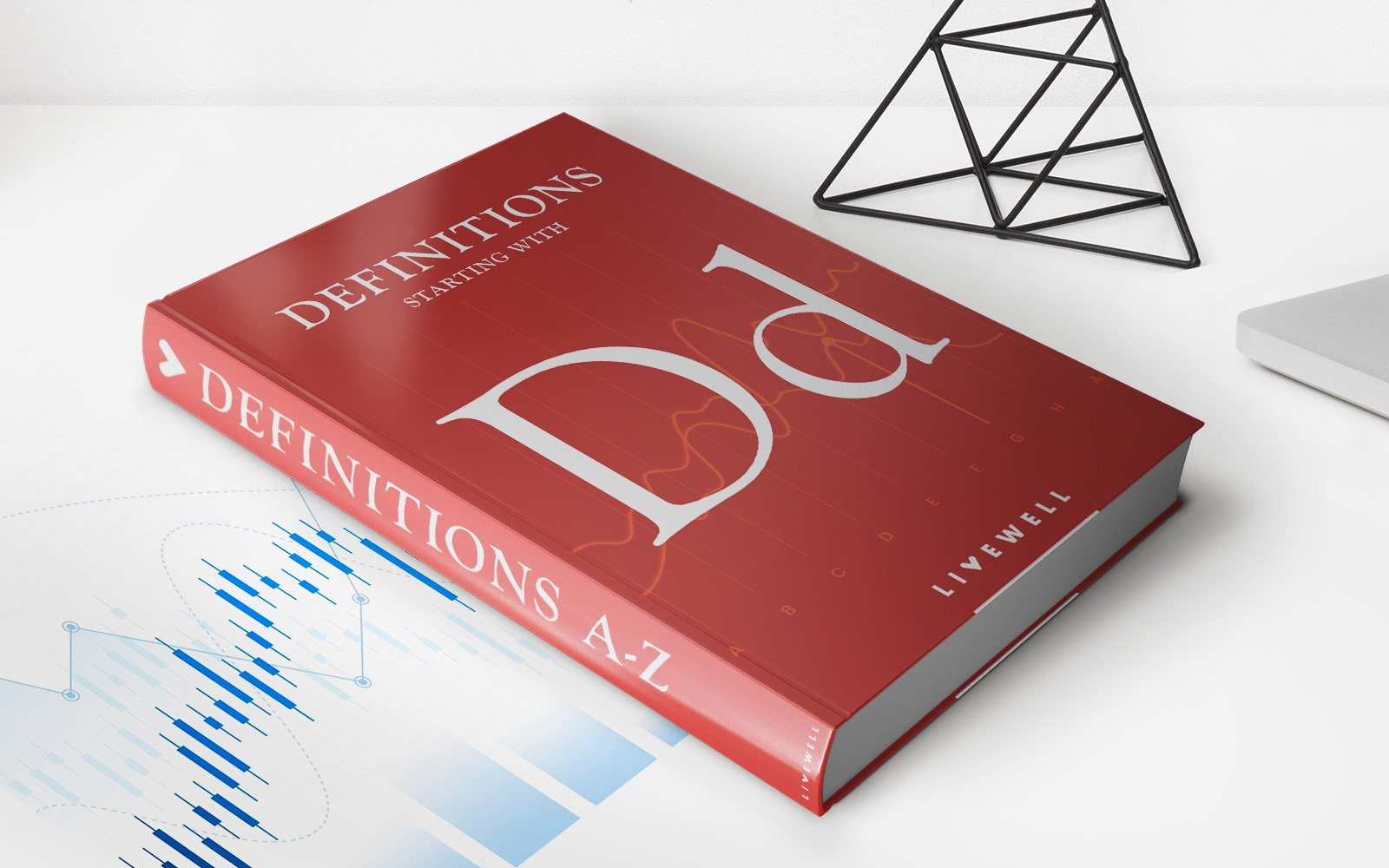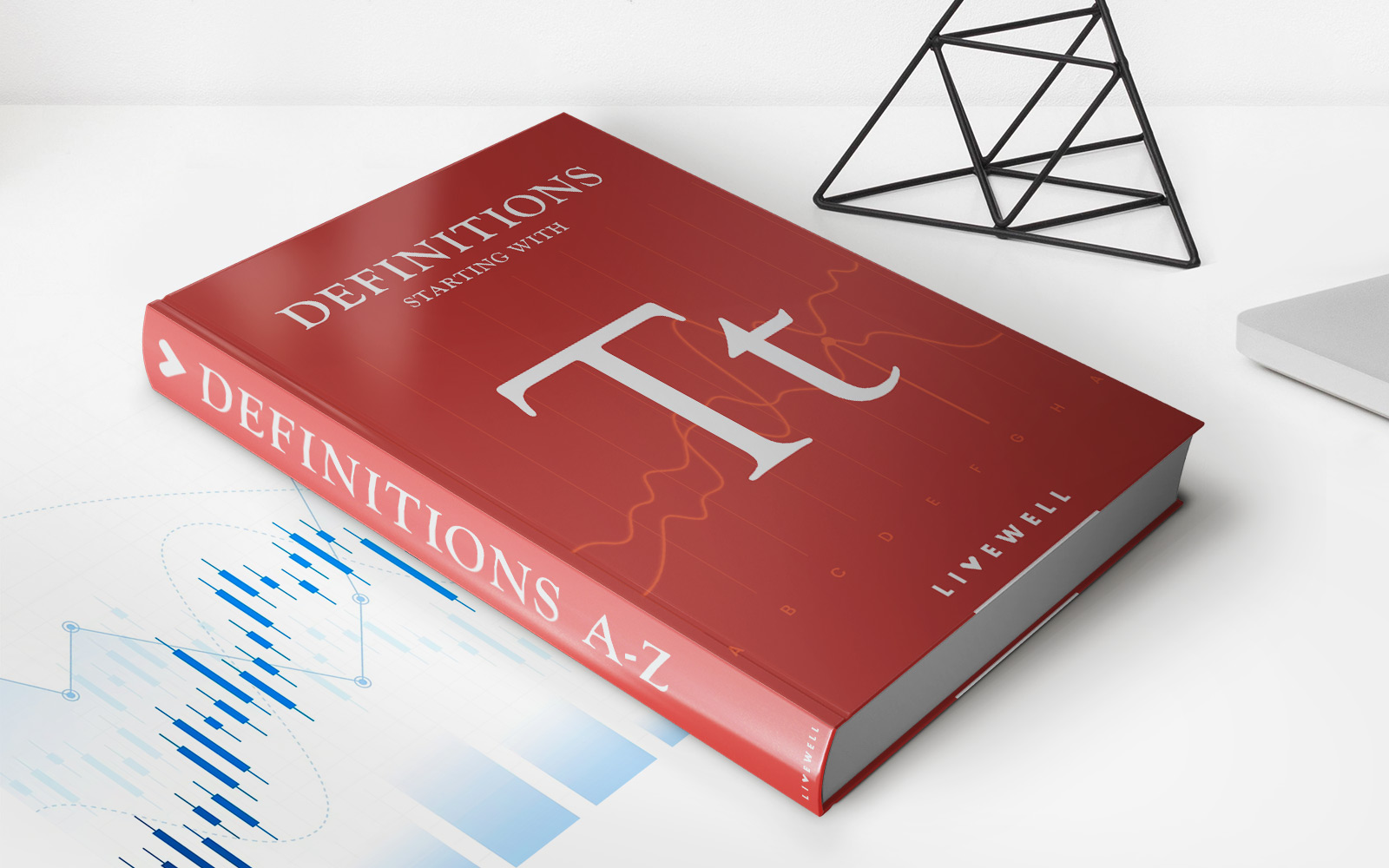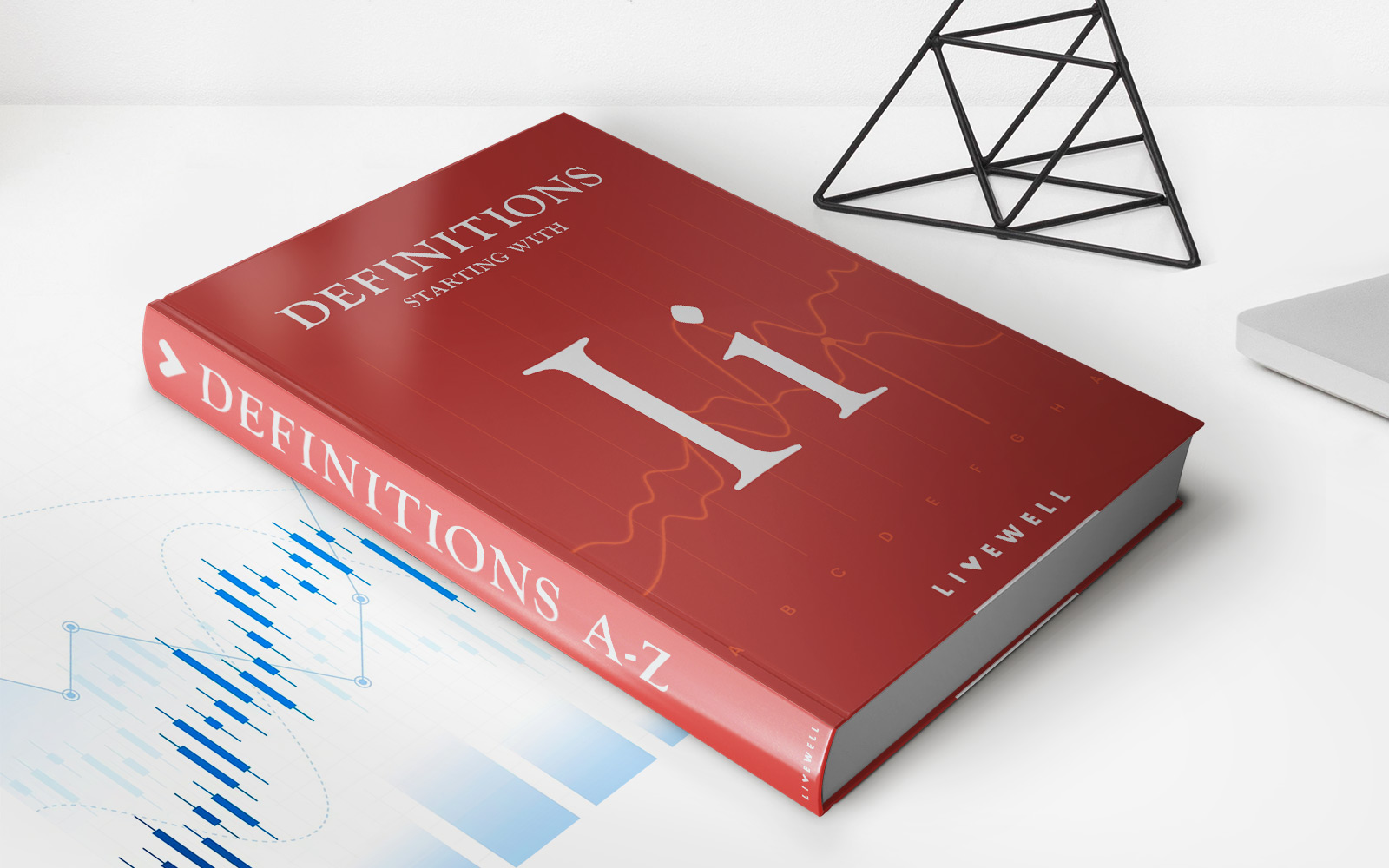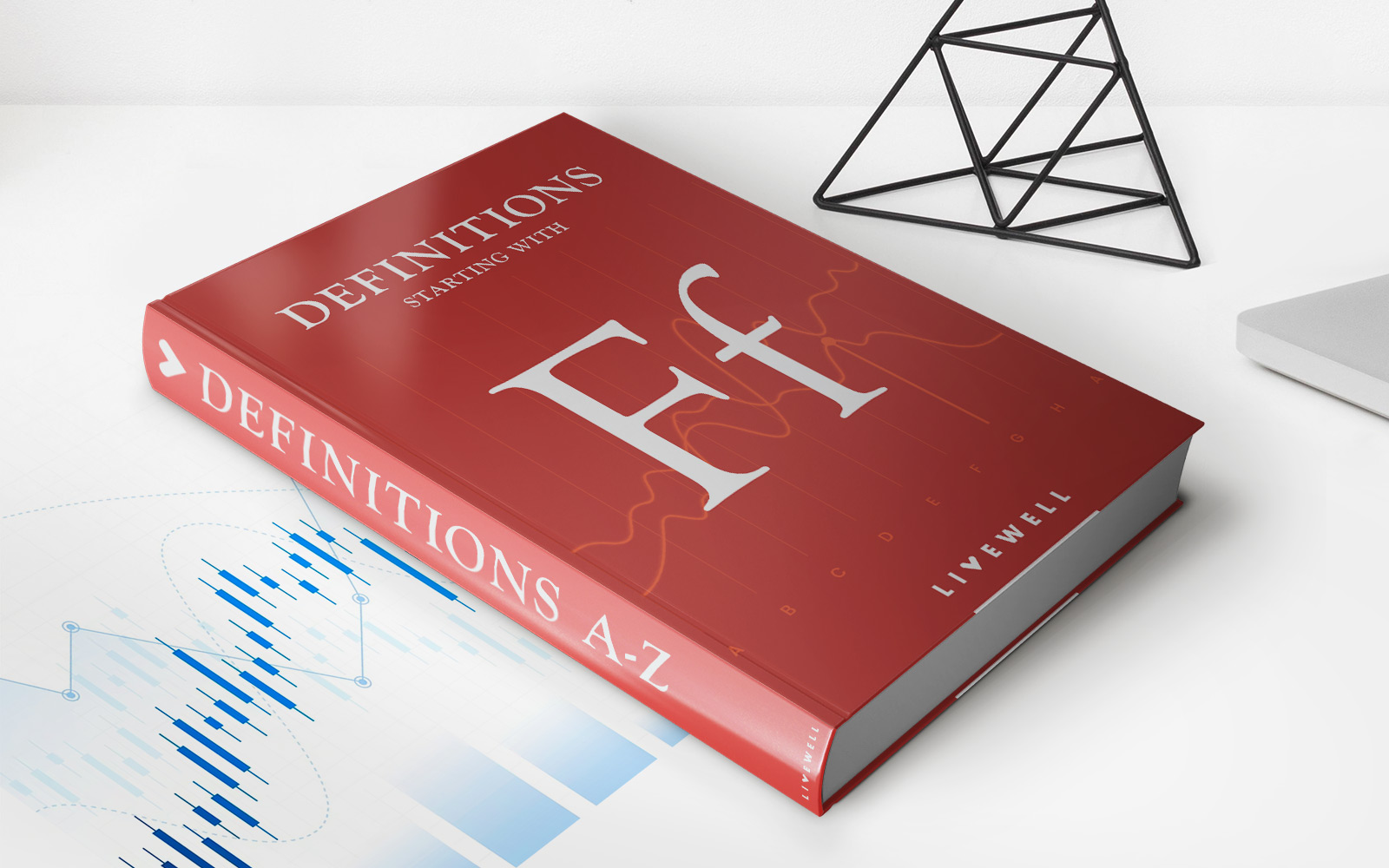

Finance
What Is Credit Disability Insurance?
Modified: February 21, 2024
Learn what credit disability insurance is and how it can protect your finances in case of unexpected health issues. Safeguard your financial stability with this essential coverage.
(Many of the links in this article redirect to a specific reviewed product. Your purchase of these products through affiliate links helps to generate commission for LiveWell, at no extra cost. Learn more)
Table of Contents
Introduction
Credit disability insurance is a type of insurance that offers financial protection to individuals who may become unable to work and meet their debt obligations due to a disability. It provides a safety net in the event that a person is unable to earn income and make loan payments, ensuring that their debts are not left unattended.
Disability can strike anyone at any time, and the financial consequences can be severe. Medical expenses, ongoing bills, and daily living expenses can quickly become overwhelming without a stable income. Credit disability insurance aims to alleviate the burden by replacing a portion of the individual’s income, allowing them to continue meeting their financial commitments even in the face of a disability.
This type of insurance is often offered by lenders to borrowers as a means of protecting their investment. It can cover various forms of debt, including mortgage loans, auto loans, personal loans, and credit card debt. In the event of a disability, the insurance company will step in to make payments on behalf of the insured individual, ensuring that their debts are appropriately managed.
While credit disability insurance is not mandatory, it can be a valuable tool for individuals who want to safeguard their financial well-being. It provides peace of mind and a sense of security, knowing that in the event of a disability, their financial obligations will continue to be met.
It is important for individuals to understand how credit disability insurance works, its benefits, eligibility requirements, and potential limitations. This article will explore these aspects in detail to help you make an informed decision about whether credit disability insurance is the right option for you.
Definition of Credit Disability Insurance
Credit disability insurance, also known as payment protection insurance (PPI), is a type of insurance that provides coverage to individuals who become disabled and are unable to work. It is specifically designed to protect borrowers by making loan payments on their behalf if they are unable to do so due to a disability.
When a borrower purchases credit disability insurance, they enter into an agreement with an insurance company. In the event of a disability that prevents the borrower from working, the insurance company will step in and make the monthly loan payments for a predetermined period, typically up to a certain maximum amount or until the borrower recovers from their disability.
The coverage provided by credit disability insurance varies depending on the policy. It may cover a wide range of disability scenarios, including both short-term and long-term disabilities. Some policies may also cover partial disabilities, where the individual is able to work but at a reduced capacity or income.
Credit disability insurance typically covers various types of debt, including mortgage loans, auto loans, personal loans, and credit card debt. It can be purchased at the time of obtaining a loan or afterwards, depending on the terms and conditions set by the lender.
It is important to note that credit disability insurance is distinct from other types of disability insurance, such as Social Security Disability Insurance (SSDI) or private disability insurance. Credit disability insurance is specifically tied to the repayment of loans and is designed to protect the borrower’s financial obligations in the event of a disability.
It is worth mentioning that credit disability insurance may have specific exclusions and limitations. It is essential for individuals to carefully review the policy documents and understand the terms and conditions before purchasing credit disability insurance to ensure that it meets their specific needs and requirements.
How Credit Disability Insurance Works
Credit disability insurance operates by providing financial protection to individuals who experience a disability and are unable to work. The specifics of how credit disability insurance works may vary depending on the policy and the insurance provider, but here’s a general overview of the process:
- Policy Purchase: The borrower purchases credit disability insurance either at the time of obtaining a loan or later, as per the terms and conditions set by the lender.
- Disability Event: If the insured individual experiences a qualifying disability event, such as a physical injury or illness that prevents them from working, they must notify the insurance company as soon as possible.
- Claim Submission: The next step involves submitting a claim to the insurance company. The claim form must be completed and accompanied by relevant supporting documents, such as medical records and reports from healthcare professionals. It is essential to fill out the claim form accurately and provide all necessary information to expedite the process.
- Claim Evaluation: Once the insurance company receives the claim, they will assess the validity of the disability and determine if it meets the policy’s definition of a covered disability. They may request additional information or contact the insured individual’s healthcare providers to gather further details.
- Payment of Benefits: If the claim is approved, the insurance company will begin making payments directly to the lender on behalf of the insured individual. These payments cover the monthly loan obligations, ensuring that the borrower’s financial commitments are met during their period of disability.
- Benefit Duration: The duration of benefits can vary depending on the policy terms. Some policies may provide coverage for a specific time period, such as one or two years from the onset of the disability. Others may offer coverage until the insured individual recovers or reaches a certain age.
- Policy Expiry: Once the maximum benefit period is reached or the borrower recovers from the disability, the credit disability insurance coverage will end, and the borrower will resume their loan payments as agreed upon in the original loan terms.
It is crucial for individuals to fully understand the details of their credit disability insurance policy, including the waiting period before benefits can be claimed, any policy exclusions or limitations, and the process for reporting a disability event and submitting a claim. By familiarizing themselves with the policy provisions, borrowers can ensure a smoother claims process and minimize any potential delays or discrepancies.
Benefits of Credit Disability Insurance
Credit disability insurance offers several benefits to borrowers, providing them with financial and emotional security in the face of a disability. Here are some key advantages of having credit disability insurance:
- Loan Payment Protection: One of the primary benefits of credit disability insurance is that it ensures the continuation of loan payments if the insured individual becomes disabled and is unable to work. This provides peace of mind, knowing that their financial obligations will be taken care of despite their inability to earn income.
- Preservation of Credit Score: Defaulting on loan payments due to a disability can have a negative impact on an individual’s credit score. Credit disability insurance helps to prevent this by ensuring that loan payments are made on time, thereby preserving the borrower’s creditworthiness.
- Financial Stability: Coping with a disability can lead to significant financial strain, with medical expenses and daily living costs adding up quickly. Credit disability insurance provides a financial safety net, allowing individuals to focus on their recovery without worrying about their financial obligations.
- Flexibility: Unlike other forms of disability insurance, credit disability insurance is specifically tied to the repayment of loans. This means that the insurance benefits can be used for any outstanding loans, including mortgages, auto loans, personal loans, or credit card debt.
- Protection for Self-Employed Individuals: Self-employed individuals may not have access to traditional disability insurance through an employer. Credit disability insurance provides them with a valuable option for protecting their financial obligations during a disability.
- Ease of Enrollment: Many lenders offer credit disability insurance as part of their loan offerings, making it easy for borrowers to enroll during the loan application process. This saves time and effort on seeking out separate disability insurance policies.
- Peace of Mind: Knowing that they have a safety net in the form of credit disability insurance can provide individuals and their families with peace of mind. They can face the future with confidence, knowing that their financial responsibilities will be taken care of in the event of a disability.
While credit disability insurance offers numerous benefits, it is essential to thoroughly review the policy terms and conditions to ensure that it aligns with your specific needs and requirements. Each policy may have its own set of benefits, limitations, and exclusions, so understanding the fine print is crucial before making a decision.
Eligibility and Enrollment
To be eligible for credit disability insurance, individuals typically need to meet certain criteria set by the insurance provider. While the specific requirements may vary, here are some common eligibility considerations:
- Age: Most credit disability insurance policies have age restrictions. The minimum and maximum age limits can vary, but individuals typically need to be between 18 and 65 years old to be eligible for coverage.
- Employment Status: Generally, individuals need to be employed either on a full-time or part-time basis at the time of policy enrollment. Self-employed individuals may also be eligible for credit disability insurance.
- Health Condition: While credit disability insurance does not usually require a medical examination, individuals may need to provide information about their health condition during the application process. Pre-existing conditions, such as disabilities or illnesses already present prior to the policy’s inception, may impact eligibility.
- Loan Type: Credit disability insurance is typically tied to specific types of loans, such as mortgage loans, auto loans, personal loans, or credit card debt. Eligibility for this insurance depends on having an eligible loan that qualifies for coverage.
Enrollment in credit disability insurance is often facilitated through the lender when applying for a loan. Individuals have the option to purchase the insurance at the time of securing the loan or within a specified timeframe after the loan is granted. During the loan application process, borrowers will be provided with information about the insurance coverage, including its cost and terms.
It is important to carefully review the policy documents provided by the insurance provider before enrolling in credit disability insurance. Understand the terms and conditions, including waiting periods, coverage limits, benefit duration, and any exclusions or limitations. Take the time to ask questions and seek clarification on any aspects that are unclear. Comparing policies from different insurers can also help in selecting the most suitable coverage for your needs.
Remember, eligibility and enrollment requirements can vary, so it is essential to consult with the lender or insurance provider to understand the specific guidelines for credit disability insurance in your situation.
Costs and Premiums
The costs associated with credit disability insurance can vary depending on several factors, including the insurance provider, the amount and duration of coverage, the type of loan, and the individual’s age and health condition. Here are some key considerations regarding costs and premiums:
- Premium Calculation: Insurance premiums for credit disability insurance are typically calculated as a percentage of the loan amount or as a fixed monthly fee. The percentage or fee may vary based on the loan type and the insured individual’s age.
- Loan Amount and Duration: The larger the loan amount and the longer the repayment period, the higher the premium is likely to be. Longer-term loans may have higher premiums as the insurance coverage extends over an extended period.
- Age and Health Condition: Younger individuals typically pay lower premiums compared to older individuals due to the lower likelihood of disability at a young age. Additionally, an individual’s health condition at the time of enrollment can impact the premium rate and coverage availability.
- Payment Frequency: Premiums can be paid on a monthly, quarterly, semi-annual, or annual basis. The payment frequency can affect the total cost of the insurance, with annual payments often resulting in some cost savings compared to monthly payments.
- Policy Terms and Coverage: The terms and coverage of the policy can influence the premium amount. Policies with comprehensive coverage, including long-term disability protection and coverage for partial disabilities, may have higher premiums compared to policies with limited coverage.
It is important to note that the cost of credit disability insurance is separate from the interest and principal payments on the loan itself. The premium amount is typically added to the loan payment and included in the monthly installments.
Before purchasing credit disability insurance, it is advisable to obtain quotes from multiple insurance providers to compare premiums and coverage options. Take the time to review and understand the policy provisions, including any limits, exclusions, or waiting periods. Additionally, consider the potential benefits of the coverage and assess whether the cost aligns with your personal financial situation and risk tolerance.
Remember, credit disability insurance premiums are an ongoing expense for the duration of the loan. It is essential to budget for these premiums to ensure that the insurance coverage remains in effect and to assess whether the benefits outweigh the associated costs.
Claims Process
When it comes to filing a claim for credit disability insurance, it is crucial to understand the claims process and follow the necessary procedures to ensure a smooth and timely resolution. Here are the general steps involved in the claims process:
- Notification: The insured individual must promptly inform the insurance company about their disability and intent to file a claim. The contact information and specific notification requirements are typically provided in the policy documents.
- Claim Form: The next step is to complete the claim form provided by the insurance company. This form will require personal information, details about the disability, and any supporting documentation, such as medical records or disability certificates.
- Supporting Documents: Along with the claim form, the insurance company may request additional supporting documents to substantiate the disability claim. These documents may include medical reports, test results, treatment history, or statements from healthcare professionals. It is important to provide accurate and comprehensive information to facilitate the claims assessment.
- Assessment and Review: The insurance company will evaluate the claim by reviewing the submitted documents and assessing whether the disability meets the policy’s definition of a covered disability. They may also seek independent medical opinions or request additional information if necessary.
- Claim Decision: Upon completion of the claim review, the insurance company will make a decision on the claim. They will notify the insured individual of the outcome, either approving or denying the claim. It is important to review the decision letter carefully to understand the reasoning behind the determination.
- Benefit Payment: If the claim is approved, the insurance company will initiate benefit payments to the lender on behalf of the insured individual. These payments typically cover the monthly loan obligations for the specified benefit duration or until the individual recovers from their disability.
- Claim Reconsideration or Appeal: In the event of a claim denial or disagreement with the decision, the insured individual has the right to request reconsideration or to file an appeal. This involves providing additional information, supporting evidence, or clarifications to support the claim. It is essential to strictly adhere to the deadlines and procedures outlined by the insurance company for appeal requests.
- Claim Closure: Once the maximum benefit period is exhausted, or if the individual recovers from the disability, the claim will be closed. The insured individual will resume making loan payments as agreed upon in the original loan terms.
It is recommended to maintain open communication with the insurance company throughout the claims process. Keeping records of all communication, including dates, times, and names of the individuals involved, can also be beneficial for reference.
Understanding the claims process and following the insurance company’s guidelines can help expedite the review and ensure a prompt resolution. If any questions or concerns arise during the process, reaching out to the insurance company’s claims department or customer service can provide valuable assistance and clarification.
Limitations and Exclusions
While credit disability insurance provides valuable coverage, it is important to be aware of the limitations and exclusions that may apply. These limitations and exclusions define the circumstances under which the insurance benefits may not be paid out. Understanding these provisions is crucial to avoid any potential surprises or misunderstandings. Here are some common limitations and exclusions to be aware of:
- Pre-Existing Conditions: Many credit disability insurance policies have a pre-existing condition exclusion period. This means that disabilities related to a condition that existed prior to the policy’s effective date may not be covered for a specified period of time.
- Waiting Period: Most policies have a waiting period, also known as an elimination period, before the insurance benefits can be claimed. During this waiting period, typically 30 to 90 days, no benefits will be paid out for disabilities that occur.
- Coverage Limitations: The policy may have limitations on the duration of coverage or the maximum benefit amount that can be claimed. For example, the policy may provide coverage for up to two years or may limit benefit payments to a certain percentage of the borrower’s monthly income.
- Exclusions for Certain Disabilities: Some policies exclude coverage for specified disabilities such as self-inflicted injuries, drug or alcohol-related disabilities, or disabilities arising from illegal activities.
- Limited Coverage for Pre-Existing Debt: Certain credit disability insurance policies may only cover new loans and exclude coverage for existing loans or debts that were in place prior to the policy’s effective date.
- Occupational Limitations: Some policies may have specific exclusions or limitations related to certain occupations or activities. For example, individuals engaged in high-risk professions or hazardous activities may not be covered for disabilities directly resulting from those occupations or activities.
- Non-Disclosure or Misrepresentation: Failure to provide accurate and complete information during the application process, such as withholding relevant medical history or providing false information, can lead to claim denial or policy cancellation.
- Policy Expiration: Credit disability insurance coverage typically expires when the insured individual reaches a certain age or when the loan is fully repaid. It is important to understand the policy’s expiration conditions and plan accordingly.
It is vital to carefully review the policy documents, including the fine print and any endorsements or riders, to understand the limitations and exclusions that may apply to the specific credit disability insurance policy. If there are any doubts or concerns about the coverage provisions, it is advisable to seek clarification from the insurance provider directly before purchasing the policy.
A clear understanding of the limitations and exclusions can help borrowers make informed decisions and manage their expectations regarding the coverage provided by credit disability insurance.
Alternatives to Credit Disability Insurance
While credit disability insurance can provide valuable protection, it is essential to explore alternative options to determine if there are better-suited alternatives for your specific needs. Here are some alternatives to consider:
- Emergency Savings: Building and maintaining an emergency fund can be an effective alternative to credit disability insurance. Having a financial reserve specifically designated for unexpected expenses, including disability-related costs, can provide a safety net without the need for insurance premiums.
- Private Disability Insurance: Private disability insurance policies are specifically designed to provide income replacement in the event of a disability, irrespective of loan obligations. These policies often offer more comprehensive coverage, including both short-term and long-term disabilities, and can be tailored to individual needs. However, they generally require a more thorough underwriting process and may have higher premiums.
- Social Security Disability Insurance: Social Security Disability Insurance (SSDI) is a federal program that provides benefits to individuals with disabilities who have paid into the Social Security system. It offers income support and access to healthcare services. However, qualifying for SSDI can involve a lengthy application and review process, and not all disabilities may meet the eligibility criteria.
- Critical Illness Insurance: Critical illness insurance is a type of insurance that provides a lump sum payment upon the diagnosis of specific critical illnesses, such as cancer, heart attack, or stroke. This type of insurance can help cover medical expenses and other financial obligations during a serious health crisis.
- Job Loss Protection: Some lenders offer job loss protection or unemployment insurance as an alternative to credit disability insurance. This type of coverage can help borrowers make loan payments if they become unemployed involuntarily. However, it is important to understand the terms and conditions, as job loss protection may have limitations and exclusions.
- Income Replacement Strategies: Instead of relying solely on insurance, individuals can develop a comprehensive income replacement strategy. This may involve diversifying income sources, such as investments or side businesses, and having a solid financial plan in place to mitigate the impact of a disability on income.
It is advisable to carefully evaluate the alternatives in terms of their costs, coverage, and suitability to your specific situation. Consider factors such as affordability, risk tolerance, health condition, and the level of financial protection needed.
Consulting with a financial advisor can provide valuable guidance when exploring alternative options to credit disability insurance. They can help assess your unique circumstances and recommend the most appropriate solutions to safeguard your financial well-being in the event of a disability.
Conclusion
Credit disability insurance can provide valuable protection to individuals who may become unable to work and meet their debt obligations due to a disability. It offers peace of mind, ensuring that loan payments continue to be made in the event of a disability, safeguarding the borrower’s financial well-being. By understanding the key aspects of credit disability insurance, individuals can make informed decisions about whether it is the right option for them.
Throughout this article, we explored the definition of credit disability insurance and how it works. We discussed the benefits it offers, such as loan payment protection, preservation of credit score, and financial stability. We also delved into the eligibility criteria and enrollment process, as well as the costs and premiums associated with credit disability insurance.
We highlighted the claims process, emphasizing the importance of following the necessary steps and providing accurate and comprehensive documentation. We also examined the limitations and exclusions that may apply to credit disability insurance, as well as alternative options such as emergency savings, private disability insurance, and social security disability insurance.
Ultimately, the decision to purchase credit disability insurance should be based on individual circumstances, risk tolerance, and financial goals. It is vital to carefully review policy provisions, compare coverage options, and consider alternatives before making a decision.
Remember, seeking guidance from financial professionals, such as lenders or financial advisors, can provide valuable insights and help navigate the complexities of credit disability insurance. By doing your due diligence and understanding the nuances of the insurance, you can make a well-informed choice that aligns with your unique needs and provides the financial protection you desire.














